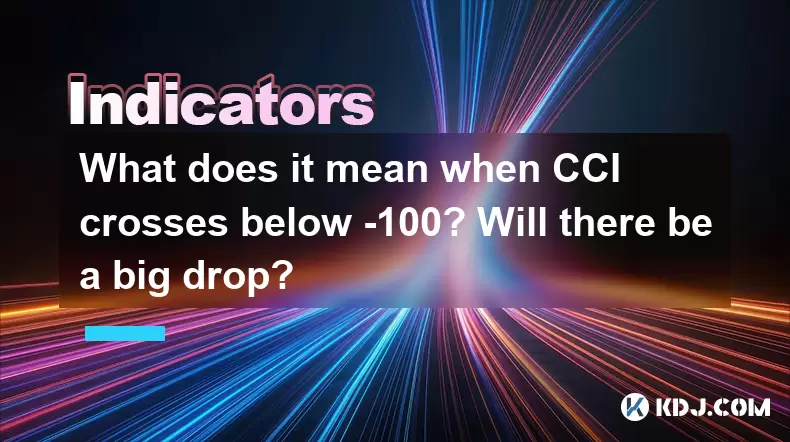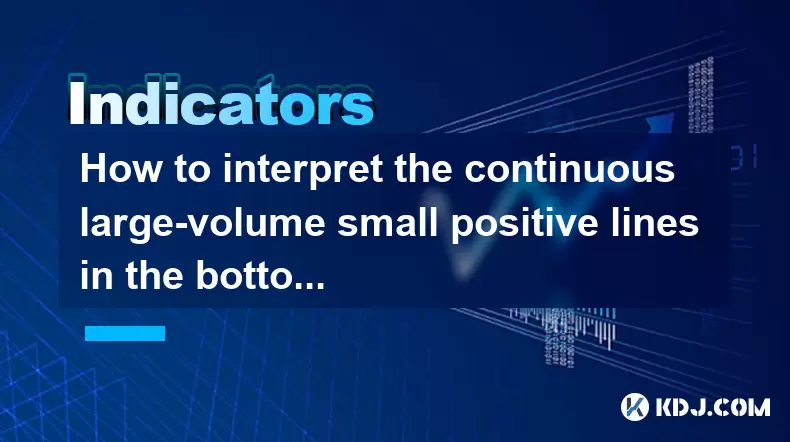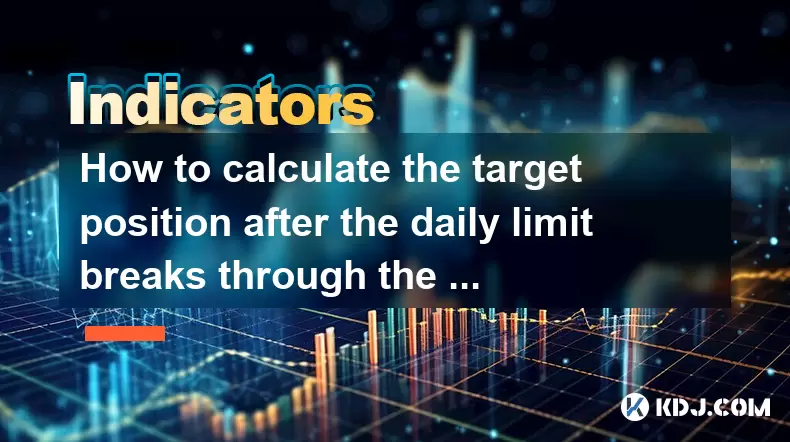-
 Bitcoin
Bitcoin $101,898.5005
-0.75% -
 Ethereum
Ethereum $2,258.1125
-1.07% -
 Tether USDt
Tether USDt $1.0004
0.01% -
 XRP
XRP $2.0178
-2.93% -
 BNB
BNB $624.0243
-1.53% -
 Solana
Solana $134.3298
-0.90% -
 USDC
USDC $0.9999
0.01% -
 TRON
TRON $0.2675
-2.05% -
 Dogecoin
Dogecoin $0.1538
-1.96% -
 Cardano
Cardano $0.5482
-1.11% -
 Hyperliquid
Hyperliquid $35.5636
5.45% -
 Bitcoin Cash
Bitcoin Cash $453.4902
-1.66% -
 Sui
Sui $2.5134
-2.97% -
 UNUS SED LEO
UNUS SED LEO $9.1292
1.77% -
 Chainlink
Chainlink $11.8457
-1.60% -
 Stellar
Stellar $0.2312
-2.73% -
 Avalanche
Avalanche $16.9721
0.29% -
 Toncoin
Toncoin $2.7549
-3.82% -
 Shiba Inu
Shiba Inu $0.0...01081
-1.10% -
 Litecoin
Litecoin $80.8250
-0.71% -
 Hedera
Hedera $0.1374
0.21% -
 Monero
Monero $305.4827
-2.36% -
 Ethena USDe
Ethena USDe $1.0006
0.00% -
 Dai
Dai $1.0000
-0.01% -
 Polkadot
Polkadot $3.2085
-3.12% -
 Bitget Token
Bitget Token $4.0845
-3.13% -
 Uniswap
Uniswap $6.3353
-1.63% -
 Pi
Pi $0.5085
-0.70% -
 Pepe
Pepe $0.0...08913
-3.82% -
 Aave
Aave $232.7090
-0.58%
What does it mean when CCI crosses below -100? Will there be a big drop?
CCI crossing below -100 signals oversold conditions in crypto, but traders should consider market context and other indicators before expecting a big price drop.
May 24, 2025 at 05:28 am

When analyzing the cryptocurrency market, one of the key indicators traders often use is the Commodity Channel Index (CCI). The CCI is a versatile indicator that can help traders identify potential trend reversals and overbought or oversold conditions. In this article, we will delve into what it means when the CCI crosses below -100 and whether this signals a significant price drop in the cryptocurrency market.
Understanding the Commodity Channel Index (CCI)
The Commodity Channel Index (CCI) is an oscillator that measures the deviation of an asset's price from its statistical mean. Developed by Donald Lambert, the CCI is typically used to identify cyclical trends in commodities, but it has become a popular tool in the cryptocurrency trading community as well. The CCI fluctuates above and below zero, with readings above +100 indicating overbought conditions and readings below -100 signaling oversold conditions.
What Does It Mean When CCI Crosses Below -100?
When the CCI crosses below -100, it is generally interpreted as a signal that the asset is entering an oversold territory. This means that the price of the cryptocurrency has fallen significantly, potentially faster than its historical average. Traders often view this as an indication that the selling pressure may be nearing exhaustion, and a potential reversal or price correction could be on the horizon.
Does CCI Crossing Below -100 Always Signal a Big Drop?
It is important to understand that while a CCI crossing below -100 can indicate that an asset is oversold, it does not necessarily mean that a big drop is imminent. The cryptocurrency market is highly volatile, and various factors can influence price movements. The CCI is just one tool among many that traders use, and it should not be relied upon in isolation.
Market Context: The broader market conditions play a significant role. If the overall market sentiment is bearish, a CCI reading below -100 might indeed precede a further drop. However, if the market is generally bullish, the same reading might signal a buying opportunity as the price could rebound quickly.
Other Indicators: Traders often combine the CCI with other technical indicators such as Moving Averages, Relative Strength Index (RSI), and Bollinger Bands to get a more comprehensive view of the market. A CCI reading below -100, coupled with other bearish signals, might increase the likelihood of a significant drop.
Volume: The trading volume at the time of the CCI crossing below -100 can also provide insights. High volume during this crossover might suggest stronger selling pressure, increasing the chances of a further decline.
Using CCI Below -100 in Trading Strategies
Traders can incorporate the CCI crossing below -100 into their trading strategies in several ways. Here are some common approaches:
Contrarian Strategy: Some traders might view a CCI reading below -100 as a signal to buy, anticipating a potential price rebound. This strategy involves buying when the market sentiment is overly bearish, expecting a correction.
Confirmation Strategy: Others might wait for additional confirmation before acting on a CCI reading below -100. This could involve waiting for the price to break a key support level or for other indicators to align with the CCI signal.
Risk Management: Regardless of the strategy, it is crucial to implement proper risk management. This might involve setting stop-loss orders to limit potential losses if the market continues to decline after the CCI crosses below -100.
Practical Steps for Using CCI Below -100
Here are detailed steps on how to use the CCI crossing below -100 in your trading activities:
Select a Cryptocurrency: Choose the cryptocurrency you want to trade. Popular choices include Bitcoin (BTC), Ethereum (ETH), and other altcoins.
Set Up Your Trading Platform: Ensure your trading platform or charting software supports the CCI indicator. Most major platforms like TradingView, MetaTrader, and Binance offer this feature.
Add CCI to Your Chart:
- Open the chart for the selected cryptocurrency.
- Navigate to the indicators section.
- Search for and add the CCI indicator to your chart.
- Adjust the default period if necessary (typically set to 20).
Monitor the CCI: Keep an eye on the CCI line. When it crosses below -100, take note of the time and price level at which this occurs.
Analyze Other Indicators: Look at other technical indicators to see if they support the CCI signal. For example, check if the RSI is also indicating oversold conditions.
Assess Market Sentiment: Review news and market sentiment to understand the broader context. Are there any significant events or announcements that could affect the market?
Make a Trading Decision: Based on your analysis, decide whether to buy, sell, or hold. If you decide to trade, consider the following:
- Entry Point: If you are buying, consider entering the market just after the CCI crosses back above -100, signaling a potential reversal.
- Stop-Loss: Set a stop-loss order below the recent low to manage risk.
- Take-Profit: Determine a take-profit level based on resistance levels or Fibonacci retracement levels.
Limitations of Using CCI Below -100
While the CCI crossing below -100 can be a useful signal, it is important to be aware of its limitations:
False Signals: Like all technical indicators, the CCI can generate false signals. A reading below -100 might not always lead to a price reversal, and the market could continue to decline.
Lag: The CCI, like many technical indicators, is based on historical data and can lag behind real-time market movements. By the time the CCI crosses below -100, the market might already be in the process of reversing.
Volatility: Cryptocurrency markets are notoriously volatile, and rapid price swings can make it challenging to rely solely on the CCI for trading decisions.
Frequently Asked Questions
Q: Can the CCI be used for all cryptocurrencies, or is it more effective for certain types?
A: The CCI can be used for any cryptocurrency, but its effectiveness can vary depending on the asset's volatility and trading volume. Highly volatile cryptocurrencies like Bitcoin and Ethereum might provide more reliable signals due to their larger market caps and higher liquidity. However, for less liquid altcoins, the CCI might generate more false signals due to lower trading volumes and increased price manipulation.
Q: How often should I check the CCI to ensure I don't miss important signals?
A: The frequency of checking the CCI depends on your trading style. For day traders, checking the CCI every few hours or even more frequently might be necessary to capture short-term price movements. Swing traders might check the CCI once or twice a day to identify potential trend reversals. Long-term investors might only need to monitor the CCI weekly or monthly to assess broader market trends.
Q: Are there any specific time frames that work best with the CCI?
A: The effectiveness of the CCI can vary depending on the time frame used. For short-term trading, a 5-minute or 15-minute chart might be suitable, but these can be noisy. For swing trading, a 1-hour or 4-hour chart might provide more reliable signals. Long-term investors might prefer daily or weekly charts to understand broader trends. Experimenting with different time frames can help you find the one that best suits your trading strategy.
Q: Can the CCI be used in conjunction with fundamental analysis?
A: Yes, the CCI can be used alongside fundamental analysis to make more informed trading decisions. While the CCI provides technical insights into price movements, fundamental analysis can offer a deeper understanding of a cryptocurrency's intrinsic value and market position. Combining both can help traders identify opportunities where technical signals align with fundamental strengths or weaknesses.
Disclaimer:info@kdj.com
The information provided is not trading advice. kdj.com does not assume any responsibility for any investments made based on the information provided in this article. Cryptocurrencies are highly volatile and it is highly recommended that you invest with caution after thorough research!
If you believe that the content used on this website infringes your copyright, please contact us immediately (info@kdj.com) and we will delete it promptly.
- XRP Rally Meets Neo Pepe Presale: A Meme Coin Revolution?
- 2025-06-23 17:05:13
- Coin-Op Comeback: Arcade Bars, Stern, and a Director's New Venture
- 2025-06-23 16:45:12
- XRP in Japan: From Community Day Tacos to Payment Sector Transformation
- 2025-06-23 17:05:13
- LILPEPE Presale Frenzy: The Meme Coin Revolution is Here, Ya'll!
- 2025-06-23 16:45:12
- Bitcoin Crash Incoming? Kiyosaki Bets Big on Silver Amidst Global Uncertainty
- 2025-06-23 17:25:11
- Dogecoin, Meme Coins, Price Prediction: Riding the Bullish Wave?
- 2025-06-23 17:25:11
Related knowledge

Is the high opening and low closing and huge volume the next day a trap for more?
Jun 23,2025 at 05:07pm
Understanding High Opening and Low Closing with Huge VolumeWhen traders observe a high opening followed by a low closing and massive volume the next day, it often raises concerns about whether this is a trap set by larger players in the market. This pattern typically indicates strong volatility within a short period, which can confuse retail investors. ...

How to interpret the MACD's second golden cross on the water but insufficient volume?
Jun 23,2025 at 05:01pm
Understanding the MACD Indicator and Its SignificanceThe Moving Average Convergence Divergence (MACD) is a widely used technical analysis tool in cryptocurrency trading. It helps traders identify potential buy or sell signals by showing the relationship between two moving averages of an asset’s price. The MACD line, signal line, and histogram are the th...

How much volume is required for the W-bottom to break through the neckline of the time-sharing chart?
Jun 23,2025 at 04:21pm
Understanding the W-Bottom Pattern in Cryptocurrency TradingThe W-bottom pattern is a popular technical analysis formation used by traders to identify potential bullish reversals. It typically appears at the end of a downtrend and resembles the letter 'W' on price charts. In the context of cryptocurrency trading, where volatility is high and trends shif...

How to interpret the continuous large-volume small positive lines in the bottom area?
Jun 23,2025 at 04:43pm
Understanding the Basics of 'Large-Volume Small Positive Lines'In technical analysis, especially within the cryptocurrency market, the pattern known as 'large-volume small positive lines' refers to a scenario where the price increases slightly (small positive candlestick) but is accompanied by unusually high trading volume. This phenomenon typically occ...

How to read the sideways consolidation after the bottom volume and long positive line?
Jun 23,2025 at 02:28pm
Understanding the Sideways ConsolidationWhen analyzing cryptocurrency charts, sidewards consolidation refers to a phase where prices move within a narrow range without a clear upward or downward trend. This pattern often appears after significant price movements, such as a sharp increase followed by a period of equilibrium between buyers and sellers. In...

How to calculate the target position after the daily limit breaks through the previous high?
Jun 23,2025 at 02:57pm
Understanding the Daily Limit BreakthroughIn cryptocurrency trading, a daily limit typically refers to the maximum price movement allowed within a single trading day on certain exchanges. When this limit is breached, especially when it surpasses the previous high, traders often seek to calculate the target position or expected price movement following s...

Is the high opening and low closing and huge volume the next day a trap for more?
Jun 23,2025 at 05:07pm
Understanding High Opening and Low Closing with Huge VolumeWhen traders observe a high opening followed by a low closing and massive volume the next day, it often raises concerns about whether this is a trap set by larger players in the market. This pattern typically indicates strong volatility within a short period, which can confuse retail investors. ...

How to interpret the MACD's second golden cross on the water but insufficient volume?
Jun 23,2025 at 05:01pm
Understanding the MACD Indicator and Its SignificanceThe Moving Average Convergence Divergence (MACD) is a widely used technical analysis tool in cryptocurrency trading. It helps traders identify potential buy or sell signals by showing the relationship between two moving averages of an asset’s price. The MACD line, signal line, and histogram are the th...

How much volume is required for the W-bottom to break through the neckline of the time-sharing chart?
Jun 23,2025 at 04:21pm
Understanding the W-Bottom Pattern in Cryptocurrency TradingThe W-bottom pattern is a popular technical analysis formation used by traders to identify potential bullish reversals. It typically appears at the end of a downtrend and resembles the letter 'W' on price charts. In the context of cryptocurrency trading, where volatility is high and trends shif...

How to interpret the continuous large-volume small positive lines in the bottom area?
Jun 23,2025 at 04:43pm
Understanding the Basics of 'Large-Volume Small Positive Lines'In technical analysis, especially within the cryptocurrency market, the pattern known as 'large-volume small positive lines' refers to a scenario where the price increases slightly (small positive candlestick) but is accompanied by unusually high trading volume. This phenomenon typically occ...

How to read the sideways consolidation after the bottom volume and long positive line?
Jun 23,2025 at 02:28pm
Understanding the Sideways ConsolidationWhen analyzing cryptocurrency charts, sidewards consolidation refers to a phase where prices move within a narrow range without a clear upward or downward trend. This pattern often appears after significant price movements, such as a sharp increase followed by a period of equilibrium between buyers and sellers. In...

How to calculate the target position after the daily limit breaks through the previous high?
Jun 23,2025 at 02:57pm
Understanding the Daily Limit BreakthroughIn cryptocurrency trading, a daily limit typically refers to the maximum price movement allowed within a single trading day on certain exchanges. When this limit is breached, especially when it surpasses the previous high, traders often seek to calculate the target position or expected price movement following s...
See all articles
























































































